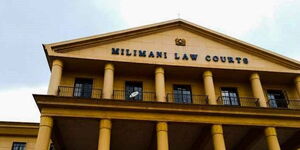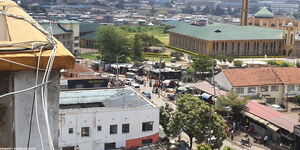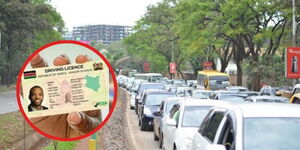To maintain law and order, a country relies on its "men (and women) in blue." In Kenya, this critical responsibility is shouldered by the National Police Service, an umbrella organisation for three powerful sub-sections: the Kenya Police Service, the Administration Police Service, and the Directorate of Criminal Investigations.
Despite having different functions, the three sub-sections of the law enforcement body all have the same mandate. The three are organised by a seamless command structure that employs a top-down system, laying out the basis of reporting and command.
At the apex of this command system is the Inspector-General of Police, currently Douglas Kanja. The IG is the principal leader and administrator of the entire police force, providing overall command, overseeing policy and administration, leadership, and oversight. Other duties include ensuring discipline, professionalism, and accountability.
Below the IG is where the police force structure becomes more nuanced. The IG is deputised by two Deputy Inspector-Generals of Police, each with their laid-out responsibilities.
The first DIG heads the Administration Police Service, overseeing Protective and Border Security. This docket is headed by Gilbert Masengeli. The other DIG is in charge of the Kenya Police Service, overseeing Public Safety and Security. This is under Eliud Lagat, but his position remains contentious.
Under DIG Masengeli are a range of specialised units that fall under the APS's mandate. The primary function of the APS is to provide security for government infrastructure, border control, and to support the Kenya Police Service in maintaining law and order.
The units include the Rapid Deployment Unit (RDU), Border Police Unit (BPU), Anti-Stock Theft Unit (ASTU), Critical Infrastructure Protection Unit (CIPU), and the Security of Government Buildings Unit (SGB).
The RDU is a highly trained, rapid-response unit deployed to address emergencies, civil disturbances, and other security threats across the country. The BPU is responsible for securing Kenya's borders and suppressing banditry and cross-border crime, particularly in remote and hostile areas.
ASTU is specifically tasked with preventing and investigating stock theft, a common problem in pastoral communities. CIPU handles the security of vital government installations, including government buildings, airports, and other strategic infrastructure. SGB is dedicated to providing security services for all government buildings and facilities.
Meanwhile, DIG Lagat oversees operations of regional/formation commanders, county police commanders, sub-county police commanders, police station heads (OCs), police posts, and patrol bases.
Regional commanders oversee all police activities and security challenges within their geographical regions. County commanders manage all police officers in a county, chair the County Security Committee, and coordinate with local government.
Sub-county heads superintend daily operations in their areas, working with local administrators to ensure efficient service delivery. An OC is in charge of a police station, managing operations, overseeing investigations, and serving as the public's primary contact.
Police posts and patrol bases are the most basic units, patrolling their areas, responding to emergencies, and collaborating with local leaders to maintain law and order.
The DCI is headed by a Director of Criminal Investigations, who is deputised by three senior officers. This includes the Regional Criminal Investigations Officer (RCIO), the County Criminal Investigations Officer (CCIO), and the Sub-county Criminal Investigations Officer (SCCIO).
The RCIO is the top DCI officer at the regional level, overseeing all DCI operations within a specific geographical region. The CCIO heads all DCI operations within a county, while the SCCIO is the DCI head at the sub-county level, which is the most localized command structure for the DCI.
The functions of the three all revolve around command and control, supervision, coordination, resource management, direct investigation, oversight, and community engagement.
Within the DCI are specialised units such as the Serious Crimes Unit, Transnational Organised Crime Unit, Economic and Commercial Unit, the Cybercrime Unit, amongst others.
The National Police Service's top-down command structure, from the Inspector General to local units, ensures a coordinated and specialized approach to law enforcement in Kenya.
This framework, which includes the Kenya Police Service, Administration Police Service, and DCI, is vital for maintaining law and order, protecting citizens, and addressing diverse security challenges nationwide.












